When you’re Doing the Stuff of self-reliance, you’ll have the scars to prove it!
There seems to be no end to the things that attach to and attack my skin. Ticks, chiggers, cuts, burns, and poisonous plants seem to find me in the woods and backyard. My go to herb to treat these nasties that slip past my defenses is plantain. Chew a leaf of two and apply it to the area.
But what if plantain isn’t available?
Today is your lucky day!
I want to share with you an all-natural DIY ointment you can conveniently carry while practicing your Doing the Stuff skills. No need to chew the weed into a spit poultice. Just open the container, apply, and heal! I pack Lucky Sherpa Salve in all my kits now. It’s on the front row in my herbal medicine cabinet too.
There are store-bought salves available with ingredients you can’t pronounce. I like to know exactly what goes on (and in) my skin. Plus, I’m a cheap Doer of the Stuff.
Here’s how to create your own luck…
Lucky Sherpa Salve Recipe
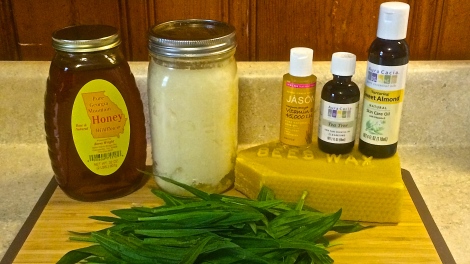
- 3/4 cup of coconut oil
- A handful of fresh plantain leaves
- 1 ounce of beeswax
- 2 Tbs of local honey
- 1 tsp of Vitamin E oil
- 2 Tbs of Almond oil (optional)
- 8 drops of Tea Tree essential oil (optional)
- 8 drops of Peppermint essential oil (optional)
How to Make Your Own
This is a topical recipe for external use only.
I’ve been battling a cyst for a while now. Plantain is an effective drawing agent. However, it grew tiresome traipsing into the yard after showers looking for fresh plantain. No one is more thankful for this convenient salve than DRG!
In a hurry to treat the cyst, I whipped up a batch. Gather a large handful of plantain leaves, broad leaf or narrow leaf will both work. The narrow leaf variety is plentiful in my area.
Place the harvested weed into a blender with a 1/2 cup of virgin coconut oil. Blend until it turns into a green liquid. I added two tablespoons of almond oil to help liquefy the mixture. It should look like a dark green smoothie when properly mixed.
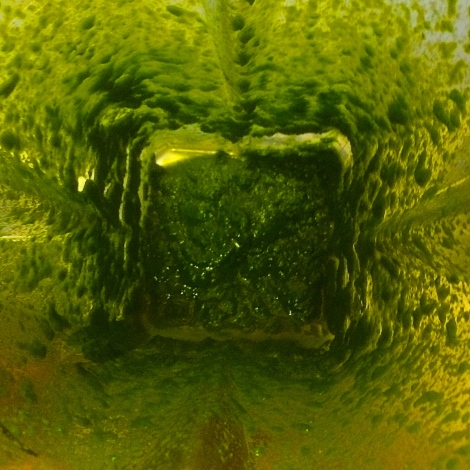
Pour the mix into a pan and place over low heat for 30 to 45 minutes to infuse the good stuff with the oil. Stir the simmering pot occasionally.
After the concoction is infused, strain the mix through cheesecloth over a wire strainer into a clean boiler. I twisted the cheesecloth into a ball and squeezed it with tongs to extract the infused oil quickly.
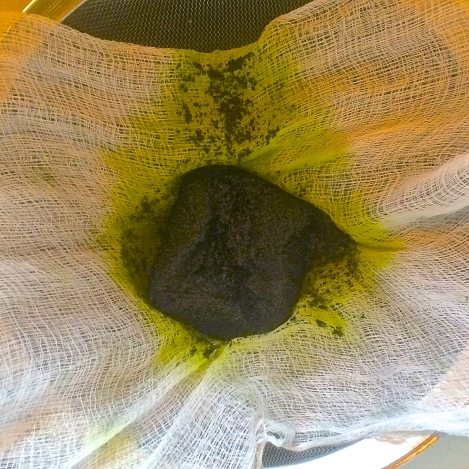
Place the pot of strained oil back on low heat. Add one ounce of grated beeswax to the mix. Beeswax is flammable. Keep the heat low or melt the wax in a double boiler before adding it to the plantain oil. Now add two tablespoons of local honey and one teaspoon of Vitamin E oil.
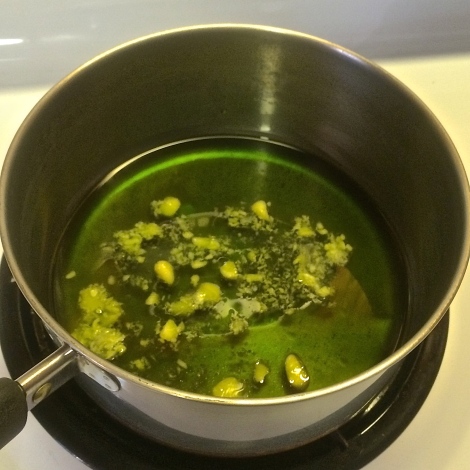
Once the beeswax is melted, remove from heat and stir in the essential oils (optional). This step isn’t necessary. I added Tea Tree and Peppermint essential oil because of their healing properties. Tea Tree oil is also an effective insect repellent.
Test the consistency by placing a drop on a plate or wax paper and place it in the fridge for a few minutes. If it’s too thin after cooling, add more beeswax. Too thick, add oil until it’s right for you.
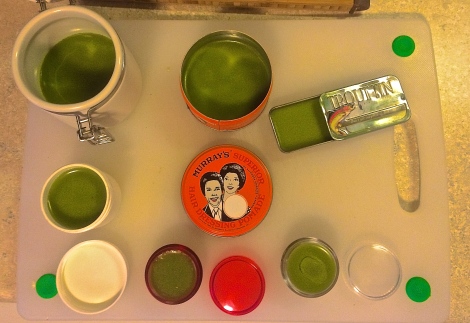
Use your Possum Mentality and round-up several containers with lids. Pour the liquified concoction into the clean containers and allow the mix to solidify. This recipe makes about 12 ounces of salve.
Benefits of Lucky Sherpa Salve Main Ingredients
Selecting ingredients for any recipe will determine the quality of the product. Start with the best stuff nature has to offer. Here are the benefits of my ingredients.
Plantain
Plantain may be the best utility player in the world of wild weeds. Check out plantain’s healing properties here.
Coconut Oil
This natural powerhouse contains super benefits.
- Anti-bacterial (kills bacteria that cause ulcers, throat infections, urinary tract infections, gum diseases, and other bacterial infections)
- Anti-carcinogenic (coconut oil has antimicrobial properties so it effectively prevents the spread of cancer cells and enhances the immune system)
- Anti-fungal (kills fungi and yeast that lead to infection)
- Anti-inflammatory (appears to have a direct effect in suppressing inflammation and repairing tissue, and it may also contribute by inhibiting harmful intestinal microorganisms that cause chronic inflammation.)
- Anti-microbial/Infection Fighting (the medium-chain fatty acids and monoglycerides found in coconut oil are the same as those in human mother’s milk, and they have extraordinary antimicrobial properties. By disrupting the lipid structures of microbes, they inactivate them. About half of coconut oil consists of lauric acid. Lauric acid, its metabolite monolaurin and other fatty acids in coconut oil are known to protect against infection from bacteria, viruses, yeast, fungi and parasites. While not having any negative effect on beneficial gut bacteria, coconut oil inactivates undesirable microbes.)
- An Antioxidant (protects against free-radical formation and damage)
- Anti-parasitic (fights to rid the body of tapeworms, lice and other parasites)
- Anti-protozoa (kills giardia, a common protozoan infection of the gut)
- Anti-retroviral (kills HIV and HLTV-1)
- Anti-viral (kills viruses that cause influenza, herpes, measles, hepatitis C, SARS, AIDS, and other viruses)
- Infection fighting
- Has no harmful for discomforting side effects
- Known to improve nutrient absorption (easily digestible; makes vitamins and minerals more available to the body)
- Nontoxic to humans and animals
Honey
Local raw honey has been used for thousands of years for its anti-viral, anti-bacterial, and anti-fungal properties. Honey can be applied to burns, cuts, and scrapes for wound care. More sweet benefits can be found here.
Vitamin E
This antioxidant promotes healing of the skin and scar tissue.
- Removes free radicals
- Promotes blood circulation
- Speeds cell regeneration
- Reduces oxidation rate
- Improves skin hydration
- Studies on rodents show promise for vitamin E’s reduction of the risk of skin cancer caused by UV exposure.
CYA Disclaimer:
I’m not a medical professional. I’m just a regular guy busy Doing the Stuff of self-reliance with calloused hands. This information is for educational purposes only and is not meant to be advice on treating, curing, preventing, or diagnosing diseases or conditions. Do your own due diligence with our information as it may not be complete.
With the above CYA taken care of, I can report that the drawing action of the plantain has made a huge impact to reduce the soreness and size of the cyst over three days. I apply Lucky Sherpa Plantain Salve to a gauze pad and tap it to the affected area twice daily. On the second day, the nastiness is oozing out. Sorry, that’s as delicate as I know how to put it. This stuff works for me!
No-see-ems and mosquitos were out last night while I was grilling. My ankles took the brunt of their bombing raids. I rubbed a dab of the salve on and the itching stopped almost immediately.
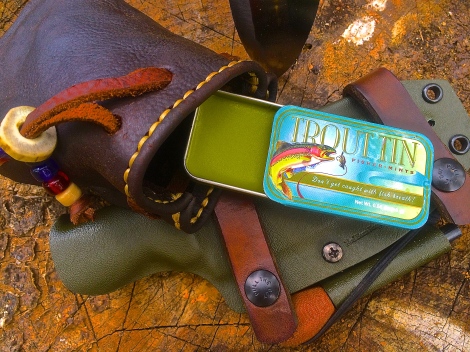
If you want to get lucky and make your own, we’d like to hear how it turns out!
Keep Doing the Stuff of Self-Reliance,
Todd


This looks great! I’ve just recently started harvesting plantain from around my garden, adding to salads, even. How long does this salve keep? I’d like to try it, but not sure how much to make… not wanting to waste some if it’ll spoil.